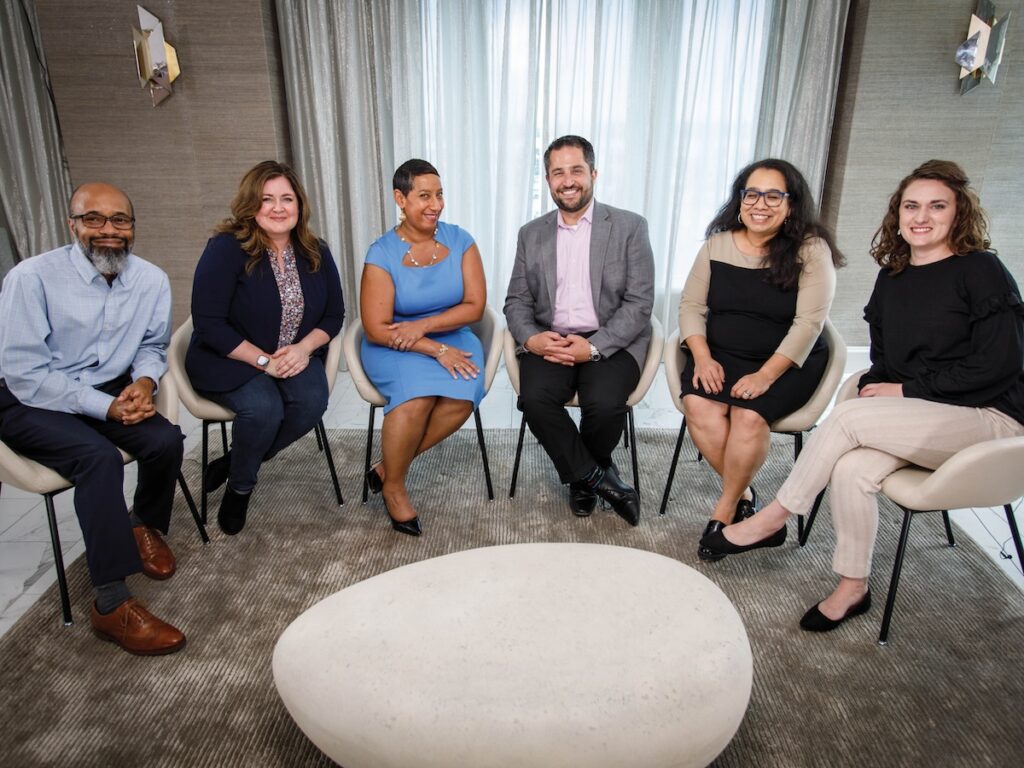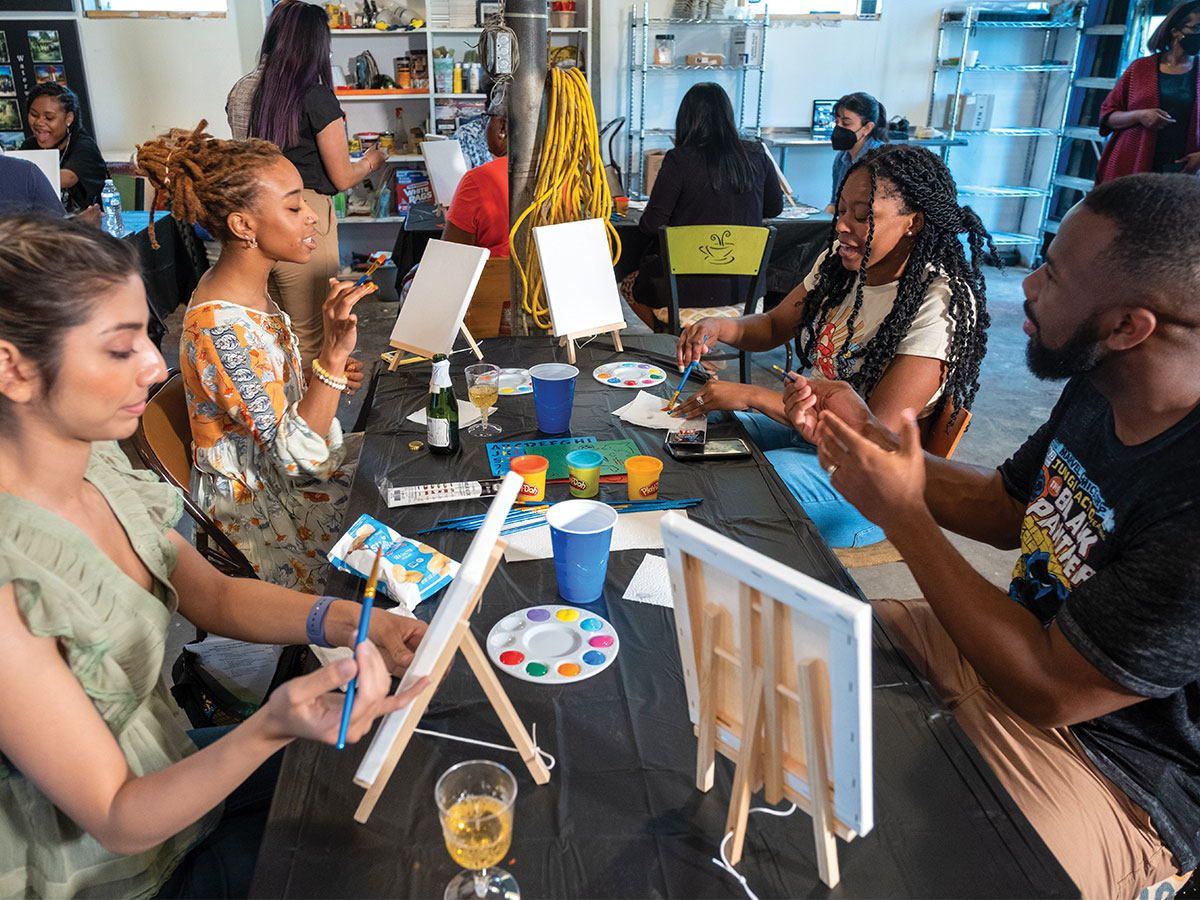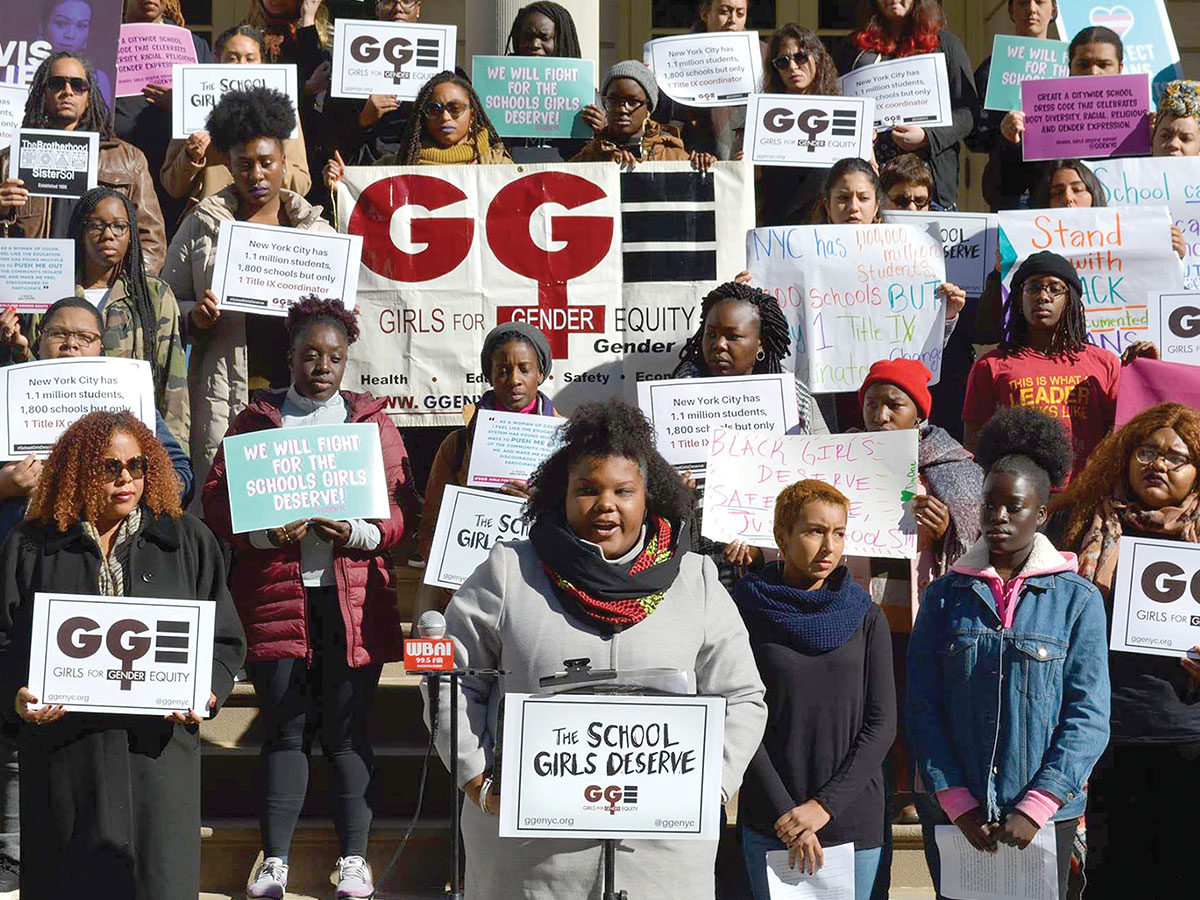Leveraging Learning to Reimagine the Future of Philanthropy

To explore the facets of our Learn, Share, Evolve Principle, six PEAK community leaders gathered to share their perspectives on how they have seen evolution in the sector from where they sit—and what changes they most hope to see.
PEAK President and CEO Satonya Fair and Chief Operating Officer Dolores Estrada led the in-person conversation at PEAK2023 with The California Wellness Foundation Director of Grants Management Amber Lopez, Helmsley Charitable Trust Senior Director of Grants Management and Operations and PEAK board alum Chris Percopo, Rose Community Foundation Vice President, Operations and PEAK board member Kelli Rojas, and Resilia Senior Director of Institutional Partnerships Anthony Simmons. Edited highlights of their conversation follow. (You can also watch video highlights of this conversation and gain additional insights by clicking here.)
Fair: What stands out for you regarding practice shifts over the past 10 years? And what growth do we still need to see in the sector?
Simmons: The answer is complex because we had a pandemic that forced folks to make changes. Ten years ago, fewer funders were having intentional conversations about equity, gender, race, and identity. The sector wasn’t ready for fully wanting to understand or embrace that. Folks are also beginning to understand that you don’t need all the levels of complexity that have always existed in our processes. What concerns me is the level of readiness to retreat from the improvements we saw, especially given institutions’ historical risk aversion. But I’m more encouraged than not because I saw a number of folks look at their structures and realize they needed to minimize complexity.
Percopo: We built that complexity ourselves, and we convinced ourselves we needed it. And now people are challenging those norms. I hope that COVID at least showed us that we need to think more critically about how things were built, that it’s okay to question how things are done, and to make things better by asking, “To what end do we have these processes?”
Rojas: Leadership needs to see that this is an equity issue and that the paperwork is weeding out really good people. We’re developing relationships we didn’t have before. We didn’t even know that some of these organizations existed because we had created all these barriers for organizations to have access to us that we didn’t realize were there until we started asking questions. Today, our grants team is the group that’s advancing equity practices and asking what the unintended consequences of our actions might be. But we need to pay attention and be intentional to build structures the right way.
Lopez: The sector still needs to catch up with technology so that we’re using these great tools in ways that don’t just duplicate what we were doing before. You really need to interrogate the “why” behind your practices with an equity lens. At CalWellness, we have transformed our grantmaking to make it easier for the grantee over the past 10 years, partly because we have an amazing board and leadership team to support us in asking questions about every single process.
Fair: We need to stay in the mental model of being in a movement. But how do you sustain these shifts over time?
Percopo: When I got into philanthropy, I was struck by how willing people were to share their experiences, to learn from each other—and the PEAK community has really done that. If we keep sharing and talking about it, it’s not going to go away. We can keep driving the discussion forward.
Rojas: Another piece is internal knowledge management. We need to document what we’re doing and the journey of how we got there, the process that we went through, and those we’ve talked to. Once we can see all those critical pieces of the puzzle, we can see how, if you take out one of those pieces, you risk regression.
Lopez: We onboarded a lot of staff during the pandemic, and we were remote, so we had to use storytelling to teach each other. We found we’re really shy on documentation and onboarding processes. That’s why we’re trying to collaborate with different folks across the foundation who can talk about—and help document—the art, science, and philosophy behind our grantmaking and strategies. This helps to intentionally embed culture and prevent regression across the organization.
Estrada: How are you gathering information from nonprofits in ways that reduce the burden on them? And have you seen relationships with nonprofits evolve over time?
Lopez: It took years to make this change in our organization, but we ultimately said that if we’ve given a nonprofit a grant before and we have a relationship with them, there’s no reason for us to start from scratch—to ask for the same level of documentation for the next round of funding. It might seem little, but it is a huge benefit to the grantee and our staff. And everybody loves it. Proposals are important, but sometimes perfunctory. You’re able to take the time that you would have spent on them and put it into the things that really add value.
Rojas: We’re collecting feedback on how we’re doing as a grantmaker. This is a shift away from coming to conversations as if we have the answers, and instead showing up ready to learn what we can do better. We then figure out meaningful ways to use the information we collect. And we close our feedback loop. Even if we’re not able to make a change that someone’s asking for, we’re able to share why we’re not changing something based on what we heard. It’s so important in building trust, and that has contributed to some really trusting grantee relationships for us.
Percopo: You must have trust for a relationship to be effective, and the best funders have clear, purposeful processes. I once worked with a donor who really wanted to support organizations, and their grant application was a conversation focused on what we were promising the grantee. Looking back, and now being on the funder’s side, it was an impactful conversation because we were working to empower our grantees to do what they needed to do—to start the conversation in the right way and not feel beaten down because they had to do a lot of prework. Let’s let them do their work and then partner with them to realize success.
Simmons: Funders need to take administrative burdens off community partners and enable them to do more of the work that they do. Funders need help with addressing their own trust issues, questioning data collection practices, collecting qualitative data, and sharing data back with nonprofits so that they can see their own growth.
Fair: If you’re taking on the hard job of trying to do practice change, there’s equity work that needs to come before that. When you bring people into a room they were once excluded from, you should focus on how everyone is going to work together. When people are seen and see how their contributions can further the mission, you’re never getting those people out of the room again.
Estrada: You need to engage all roles within an institution in order to make the external relationships stronger. Focusing on relationship-building strengthens what you’re doing because you position yourself to become part of the fabric within the community that you’re serving.
Simmons: Let the community know that you are on this learning journey together, and that when you are attempting something different, you will engage the community before you act. That way, you can get a sense of how to customize your plans to fit their needs. And sharing that story externally means spending time being vulnerable, especially if you didn’t have the positive impact you hoped to have. Progress happens at the speed of trust. When the community you serve can hear your story and see the process, you build trust. We’ve all seen institutions advancing a particular strategic plan or agenda and not share it with the community. It creates confusion, which makes it easier for folks in a community to retreat from you.
Percopo: If you don’t intentionally try to build culture, you may end up with a culture you don’t want—and undoing that culture to create what you want is a much harder lift. No one wants a toxic environment where we’re going to fail, so pay attention or you’re going to fall short. Especially in our sector, the culture we create for ourselves at work must be felt by the community.
Estrada: We want to leave with a little bit of hope and a little bit of promise. So, in your opinion, how do you see the sector progressing?
Rojas: The fact that philanthropy is having conversations about what it would truly look like if we were to redistribute assets gives me a lot of hope. What could that do for the community? I know that creates a strange tension, because some people see that as a challenge to our sector and to the profession. But if we all are thinking that way, we can help to move philanthropy in that direction.
Lopez: What gives me hope is the human transformation that’s taking place. Where people are learning, they’re talking. They’re connecting. They’re questioning. And I think that these are the things that create long-term change. Ask: How can we support each other through this change? How can we support our human transformation together?
Percopo: We’ve spoken recently about grants management having a seat at the table. But life is a banquet and there are many tables. The challenge is not just about finding the right table, but to set the table you want for yourself. You need to keep going, because now that people are talking about these topics—some of them scary and not fun—there are conversations that have to happen.
Simmons: I’m blessed to support emergent practitioners. That’s what gives me hope, because institutions are composed of human beings. If you’re going to change the institution, then you start by working with the people within the institution. And we all have deep structural understandings of how these institutions can either coalesce to make things bad or to make things better.
Estrada: There’s so much great learning that can happen when we can be in a space to communicate and build those connections. The next generation of grants professionals is coming. They’re asking these questions, and they’re pushing forward, and they’re wanting to understand why we do things this way. Taking a human-centered approach to what philanthropy does gives me hope.
Fair: The people who work in philanthropy give me great hope. With each of you leaning into this community, supporting each other and other institutions, we will accomplish incremental changes and long-term changes that will realize a vision of more principled grantmaking practices.
Image: Anthony Simmons, Amber Lopez, Satonya Fair, Chris Percopo, Dolores Estrada, and Kelli Rojas. Photo by Greg Smith.








